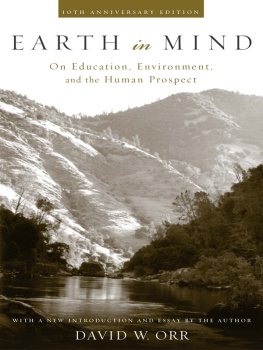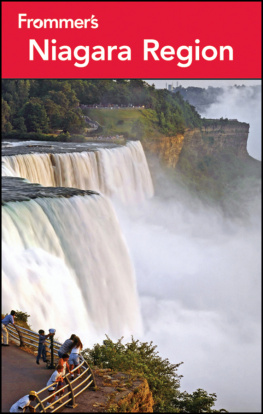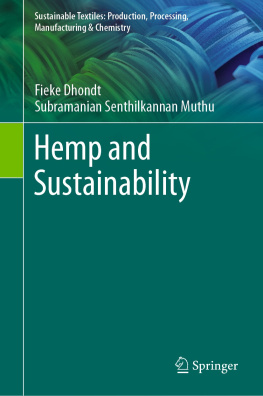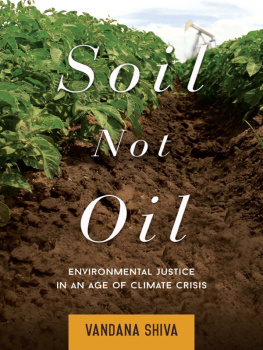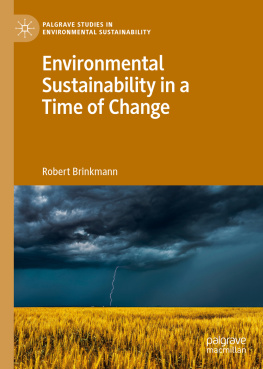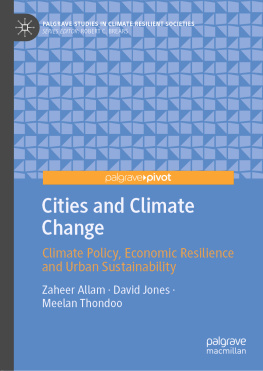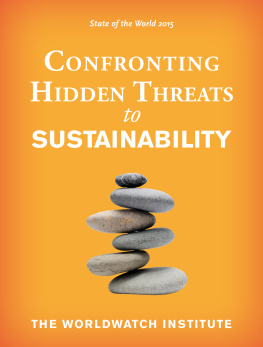DANGEROUS YEARS
ALSO BY DAVID W. ORR
Hope Is an Imperative
Down to the Wire
Design on the Edge
The Last Refuge
The Nature of Design
Earth in Mind
Ecological Literacy
Dangerous Years
Climate Change, the Long Emergency, and the Way Forward
DAVID W. ORR

Published with assistance from the foundation established in memory of Amasa Stone Mather of the Class of 1907, Yale College.
Copyright 2016 by David W. Orr.
All rights reserved.
This book may not be reproduced, in whole or in part, including illustrations, in any form (beyond that copying permitted by Sections 107 and 108 of the U.S. Copyright Law and except by reviewers for the public press), without written permission from the publishers.
Yale University Press books may be purchased in quantity for educational, business, or promotional use. For information, please e-mail (U.K. office).
Set in Janson Oldstyle and Futura Bold types by Westchester Publishing Services.
Printed in the United States of America.
ISBN 978-0-300-22281-4 (hardcover : alk. paper)
Library of Congress Control Number: 2016939429
A catalogue record for this book is available from the British Library.
This paper meets the requirements of ANSI/NISO Z39.481992 (Permanence of Paper).
10 9 8 7 6 5 4 3 2 1
To David Crockett
CONTENTS
PREFACE
This book concerns the long-term political, economic, and social implications of climate destabilization. Time will tell whether the Paris Agreement reached in December 2015, COP-21, is the beginning of a serious global effort to cap off the worst that could happen. Even so, our climate and other Earth systems will not reach a new equilibrium for a very long time. By then the Earth may have become a different planet, what Bill McKibben calls Eaarth, with a hotter and more capricious climate.
The numbers are daunting. In March 2016, the concentration of carbon dioxide (CO2) in the atmosphere crossed the 402 parts per million (ppm) threshold, a 42 percent increase over the preindustrial level. The total of other heat-trapping gases measured in carbon-dioxide-equivalent units is perhaps another 50 to 70 ppm. As a result the temperature of the Earth is higher by one degree Celsius (or 1.7 degrees Fahrenheit), with perhaps another half a degree of warming in the pipeline due to the lag between what comes out of our tailpipes and smokestacks and the resulting climate-change-driven weather effects we experience. We will be fortunate to cap CO2 levels at 450 ppm, hold the warming to two degrees Celsius, and tiptoe successfully around carbon-cycle feedbacks that could trigger catastrophic changes. But we have every reason of prudence, morality, and sheer survival to meet and exceed those targets as quickly as possible. We are learning that the climate system is complex and nonlinearthat is to say, unpredictable and wholly unforgiving of human error and tardiness of the day-late, dollar-short kind. We have initiated very large changes in Earths atmosphere with a duration measured in centuries to millennia, but our institutions, organizations, systems of governance, economies, and thinking are geared to the short term, measured in years to a few decades.
On the other side of the equation is the rapidly growing technological capacity to power the U.S. and global economies by a combination of increased energy efficiency and renewable energy in various forms. Here there are good reasons for sober optimism, but the path ahead wont be easy. The physics of energy and the laws of thermodynamics are unmovable, as are the obscure facts of energy return on investment and power density. The energy scaffolding of the modern world was built on fossil fuels that are highly concentrated, portable, and relatively cheap. Renewable energy in its various forms is diffuse, more difficult to concentrate, more expensive, and has a lower power density and energy return on investment. Demographics and human behavior also compound the difficulties posed by physics. The worlds population is now 7.4 billion heading toward a crest of perhaps eleven billion. Our material expectations and needs for mobility are higher than ever and still growing. And there is good reason to believe that we have already overshot the Earths carrying capacity.
Against this backdrop, the odds of curbing the worst that could happen are said to be fifty-fifty, give or take. For perspective, no sane person would get in a car with those odds of a fatal accident.
In this book I consider some of the changes that must occur in order for the world to come through the dangerous years of climate chaos intact. My focus is not on technological transformation, but on the deeper changes of governance, economy, education, and heart that underlie our predicament as both the cause of our plight and the solution. Both hardware and software changes are necessary, but neither is sufficient in itself. And both must be recalibrated to a longer horizon. Our problems are compounded because climate change is just one of several interrelated threats to our common future. Each of these threats is global, permanent, and symptomatic of deeper flaws embedded in our systems of governance, politics, economy, sciences, demographics, and culture. Together they represent a system crisis that will span centuries. We are faced not with separate crises, wrote Pope Francis in his encyclical Laudato Si, but rather with one complex crisis which is both social and environmental.
I do not believe that we are fated to destroy the Earth by fire, heat, or technology run amuck. But if there is a happier future it will come down to this: to act with compassion and energy, our hearts must be in it; to act intelligently, we must understand that we are but one part of an interrelated global system; to act effectively and justly, we must be governed by accountable, transparent, and robust democratic institutions; and to act sustainably, we must live and work within the limits of natural systems over the longterm.
In other words, we must learn to solve for a pattern that includes human contrivances of economy, governance, education, technology, society, culture, and behavior embedded in the ecosphere of air, land, waters, other species, and complex biogeochemical cycles. The rub is that were not very good at solving systems problems that are large or may endure for an extended period. First we deny the problem; then we dawdle; and, when finally forced to act, we tend to overlook the underlying structural causes and fiddle with small changes at the margins that often have unforeseeable and counterintuitive effects.
For these and other reasons, the necessary changes will most likely begin in neighborhoods, cities, states, regions, and networks of global citizens. They must start at a manageable and comprehensible scale by a process of trial and error. And they must cascade up to change the larger systems of governance and economy. In time such small efforts will change everything, as Naomi Klein puts it, including our economy, consumption habits, expectations, governance, distribution of wealth, and the practice of democracy. Computer scientist James Martin, in The Meaning of the 21st Century, expresses the belief that we need another revolution, putting into place the desirable management, laws, controls, protocols, methodologies, and means of governance. Economist Herman Daly believes that the necessary changes will require something like repentance and conversion. My own view is that both and more will be necessary to navigate the dangerous years ahead.
Next page




